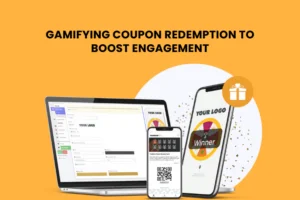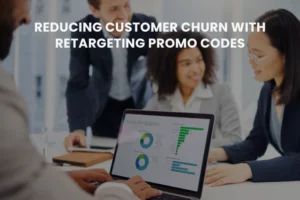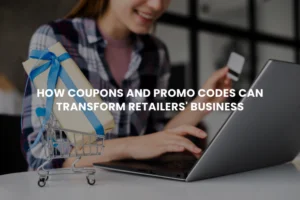
Maximizing Revenue with Gift Card Data: How to Leverage Insights for Growth
- The Untapped Potential of Gift Card Data
- Analyze Gift Card Purchasing Behavior
- Track Redemption Rates and Timing
- Leverage Cross-Selling and Upselling Opportunities
- Segment Your Gift Card Audience
- Predict Customer Behavior with Gift Card Data
- Conclusion
Gift cards have long been a staple in the retail world, providing businesses with a reliable revenue stream while offering customers convenience and flexibility. However, many retailers overlook the goldmine of insights that gift card data can offer. Beyond being a tool for customer engagement, gift cards generate valuable data that, when properly analyzed, can help businesses unlock new growth opportunities.
In this blog, we’ll explore how retailers can leverage gift card data to gain deeper insights into customer behavior, purchasing patterns, and marketing effectiveness to maximize revenue.
The Untapped Potential of Gift Card Data
Gift cards represent more than just pre-paid credits; they are a valuable source of data that can reveal key trends about your customers. Every gift card transaction—whether it’s a purchase, redemption, or balance inquiry—contains information that, when analyzed, can inform strategic decisions for future growth.
Here’s how gift card data can offer insights:
- Customer Purchase Patterns: Gift card usage can reveal how customers interact with your business, such as their purchasing habits and frequency.
- Redemption Trends: Tracking when and how gift cards are redeemed can help you tailor marketing efforts around specific seasons or customer behavior patterns.
- Market Segmentation: By analyzing gift card transactions, you can better understand which customer segments are more likely to purchase and use gift cards, informing targeted marketing strategies.
Let’s break down how to use this data for actionable insights.
Analyze Gift Card Purchasing Behavior
Gift card sales data can give you insights into customer preferences and purchasing behavior. By examining who buys gift cards, how much they spend, and how often they purchase, you can identify patterns that help shape your marketing strategies.
Here are some questions to consider when analyzing gift card purchasing behavior:
- Do customers buy gift cards more frequently during holidays or special promotions?
- What is the average amount loaded onto a gift card?
- Which customer segments are most likely to purchase gift cards?
By understanding these behaviors, you can better target your marketing campaigns. For example, if you notice a spike in gift card sales around certain holidays, you can launch seasonal promotions or encourage early purchasing with discounts on bulk gift card purchases.
Track Redemption Rates and Timing
Redemption data provides key insights into when customers are most likely to use their gift cards. For instance, are gift cards redeemed soon after purchase, or do customers tend to wait weeks or months? Analyzing redemption patterns can help you optimize marketing efforts around peak redemption periods.
Consider how you can use redemption data to:
- Create Timely Promotions: If your data shows that customers typically redeem gift cards after the holidays, plan follow-up promotions during this time to encourage additional purchases.
- Encourage Faster Redemption: Use gift card data to identify unredeemed balances and design campaigns encouraging customers to redeem them sooner, such as offering bonus points or rewards for quicker use.
Understanding redemption rates also allows you to better manage your cash flow. By predicting when large volumes of gift cards are likely to be redeemed, you can plan inventory and staffing needs more accurately.
Leverage Cross-Selling and Upselling Opportunities
- If you notice customers frequently buy specific product categories when redeeming gift cards, create bundles or offer complementary products to encourage larger purchases.
- Use redemption data to recommend higher-value items that align with customers’ preferences, boosting your average transaction value.
For example:
By personalizing the customer experience during the redemption process, you can increase overall sales and customer satisfaction.
Segment Your Gift Card Audience
Not all gift card customers are the same. Some customers may be repeat buyers, while others purchase gift cards as one-time gifts. By segmenting your gift card audience, you can tailor your messaging and marketing efforts to specific customer groups, maximizing engagement and conversions.
Key customer segments to consider include:
- Gift Givers: If your These customers buy gift cards for others. Target them with promotions during gift-giving seasons like birthdays, holidays, and special occasions.
- Frequent Shoppers: These customers use gift cards to pay for their regular purchases. Offer them loyalty rewards or discounts for future gift card purchases.
- First-Time Buyers: Identify customers who use gift cards as an introduction to your brand and create campaigns to convert them into repeat customers.
With OptCulture’s Gift Card Management platform, businesses can segment customers based on purchase frequency, redemption habits, and demographics, allowing for more targeted and effective marketing campaigns.
Predict Customer Behavior with Gift Card Data
Gift card data can also be used to create predictive models that forecast future customer behavior. By analyzing historical data, retailers can predict when customers are likely to buy or redeem gift cards and what items they may purchase. This allows businesses to plan for demand, launch timely promotions, and optimize inventory.
For example, if your predictive analytics show that customers typically redeem gift cards for higher-value items after the holiday season, you can prepare by stocking up on those items and offering promotions that encourage customers to make additional purchases.
By using predictive analytics, businesses can anticipate customer needs and stay ahead of demand, ensuring they’re ready to capture revenue opportunities when they arise.
Conclusion
Gift card data is a treasure trove of valuable insights that can drive smarter marketing strategies and higher revenue. By analyzing purchase patterns, tracking redemption behavior, leveraging cross-selling opportunities, and using predictive models, retailers can maximize the impact of their gift card programs.
With the right tools, such as OptCulture’s Gift Card Management platform, businesses can harness the full potential of their gift card data to gain a competitive edge and drive sustained growth.
Ready to unlock the power of your gift card data? Contact us today to learn how OptCulture can help you leverage insights for growth.




